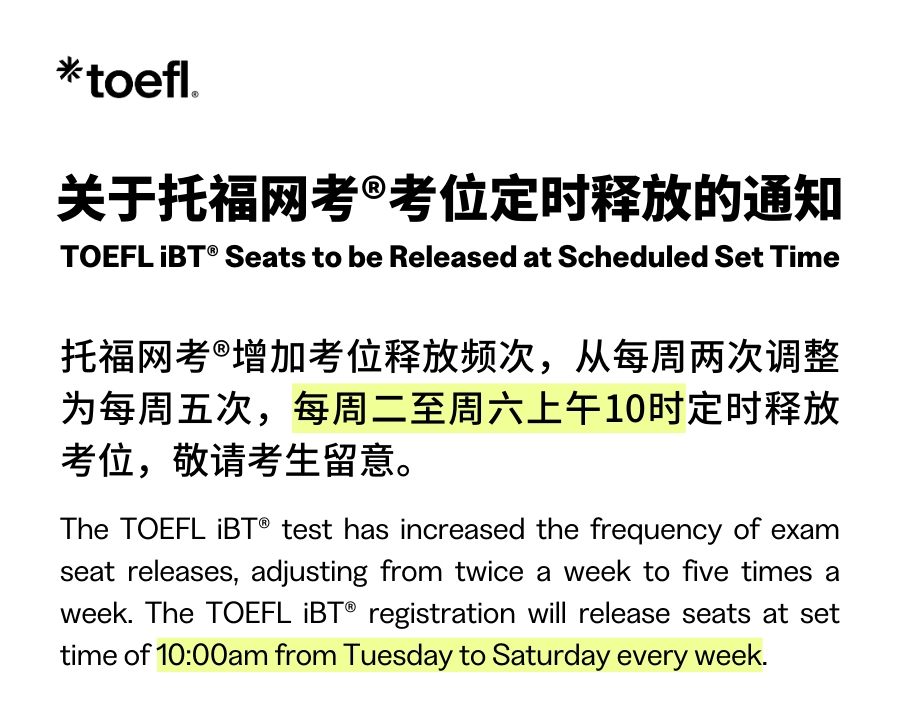托福tpo33听力题目,包含Conversation1、Lecture1、Lecture2、Conversation2、Lecture3、Lecture4,同时为大家呈现TPO听力原文文本及TPO听力答案解析,时差网祝大家考出好成绩!
Conversation1
1. Why does the woman go to see the man?
A) To ask about a university policy regarding dorm rooms
B) To report excessive noise in her dorm
C) To report that room temperatures are too high in her room
D) To inquire about the status of a request she had made for a repair
2. How has the woman been dealing with her problem?
A) By using an electric heater
B) By staying in a different building
C) By sleeping in another room in her building
D) By exchanging rooms with a friend
3. What does the man imply about the custodian?
A) The custodian is not usually responsible for making repairs.
B) The custodian did not follow correct procedures.
C) The custodian needs permission before making repairs.
D) The custodian had reported the problem earlier.
4. Why does the man mention winter?
A) To suggest that an electric heater is not yet necessary
B) To show that he understands the woman's frustration
C) To encourage the woman to move to another room
D) To explain why it may take time to fix the woman's problem
5. What will the man do to help the woman?
A) He will fill out a maintenance request form for her.
B) He will send a maintenance team to her room soon.
C) He will order a new heater for her room right away.
D) He will allow her to change rooms temporarily.
Lecture1
6. What is the lecture mainly about?
A) Building techniques that were common in the ancient world
B) Evidence of several early attempts to build a pyramid
C) Possible answers to an ancient mystery
D) The history of the pyramids of Egypt
7. According to the professor, what is the main argument against the theory that the stone blocks of the Great Pyramid were lifted into place with cranes?
A) Wooden cranes would have been too weak to lift the blocks.
B) There is no evidence of ancient Egyptians ever using cranes.
C) The use of cranes would have resulted in imprecise dimensions.
D) There would not have been enough room for a platform for the cranes.
8. Why does the professor mention a mountain road?
A) To illustrate an alternative to a steep ramp
B) To emphasize the effort needed to move large stone blocks
C) To imply that progress on the Great Pyramid was slow
D) To describe the shape of the road leading to the Giza Plateau
9. Why does the professor talk about the accuracy of the proportions of the Great Pyramid?
A) To provide background on the principles of microgravimetry
B) To discount the possibility that a ramp once spiraled around outside of the pyramid
C) To explain the effectiveness of computer models of the pyramid
D) To emphasize the difficulty of building a ramp with the correct slope
10. The professor discusses different methods the Egyptians may have used to build the Great Pyramid. For each method listed below, place a check in the box that show with whom it is associated. Click the correct boxes. This question is worth 2 points.

11. What is the professor's view of the Houdin's theory?
A) She would like to see more detailed microgravimetric surveys before she will be convinced it is true.
B) She is surprised at how similar it is to Herodotus' theory.
C) She finds the microgravimetric evidence for it to be very strong.
D) She thinks it is plausible but leaves some important questions unanswered. ?
Lecture2
12. What is the lecture mainly about?
A) The use of tree rings to measure water usage rates
B) Collecting data that are useful for planning water distribution
C) Investigating the history of water use in the Colorado River basin
D) The need for more government involvement in water distribution
13. What does the student find surprising about the 1922 water-sharing agreement?
A) It was based on only twenty years of data.
B) It was approved by all seven states in the region.
C) It was meant to remain in effect for more than 100 years.
D) It was based on data from outside the Colorado River basin.
14. According to the professor, what was the problem with the data recorded before the 1970s?
A) The data were recorded on old instruments.
B) The recorded data and human observation did not match.
C) There were gaps in the recorded data.
D) The data did not reflect the historical changes in the flow of the Colorado River.
15. What assumption did researchers use to draw conclusions about the Colorado River basin?
A) Ancient tree ring data can only be obtained from dead trees.
B) The climate in an area tends to remain constant over time.
C) Rainfall has a limited impact on water flowing in rivers.
D) Width of tree rings can correspond to the amount of moisture in an area.
16. What does the professor imply when he describes the early to mid-1900s as the wettest period for the Colorado River in 400 years?
A) The climate in the Colorado River basin will become wetter in the future.
B) The 1922 agreement was based on overestimated average river flows.
C) Water flowing in the Colorado River rises and falls at a predictable rate.
D) Human activity caused climate change in the Colorado River basin.
17. What is the professor's attitude toward future water-management plans in the Colorado River basin?
A) He believes better methods for collecting data need to be developed.
B) He does not believe water management will be a concern in the immediate future.
C) He is optimistic that new data will lead to better planning.
D) He is not certain all scientists understand the current condition of the Colorado River.
暂无相关记录


